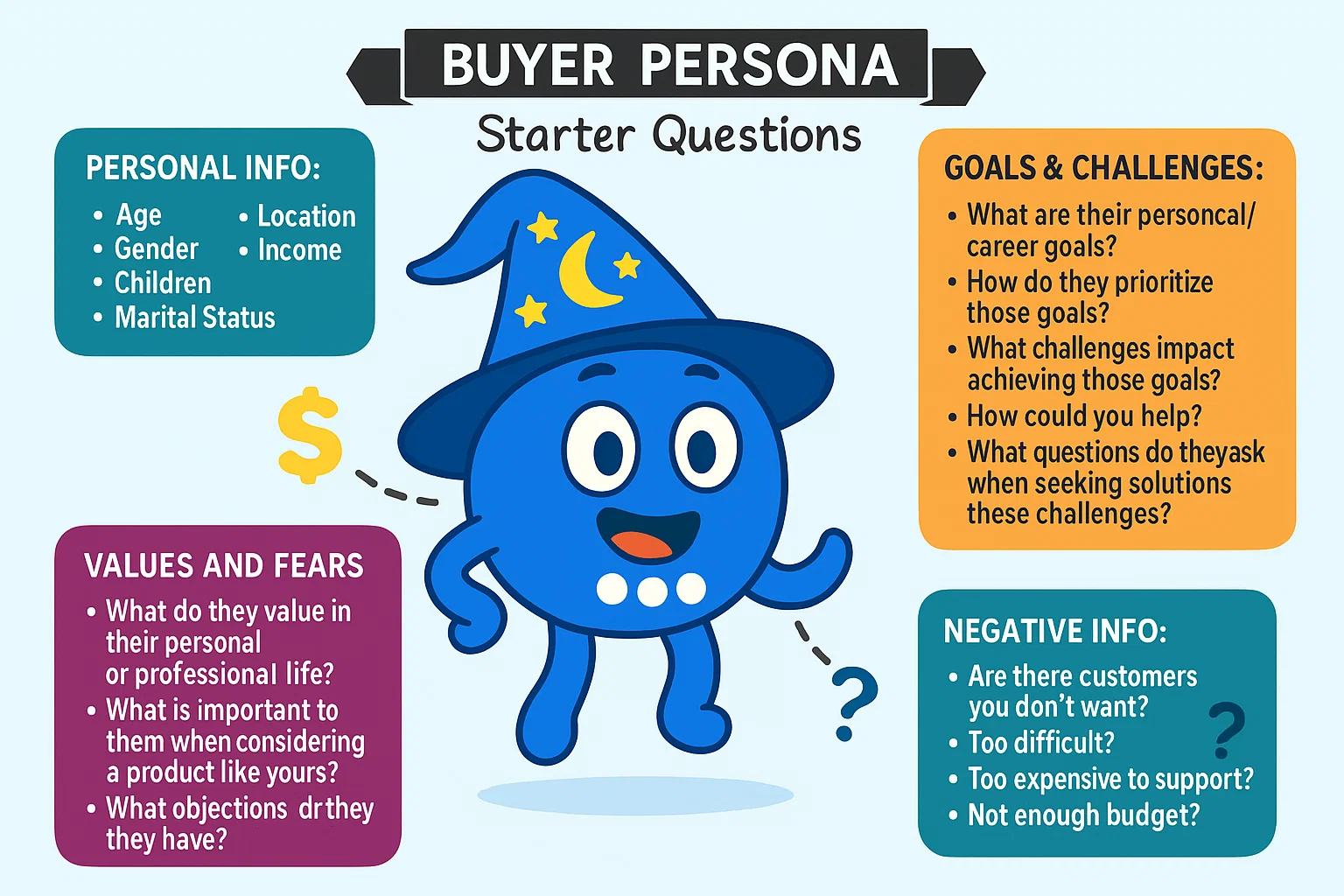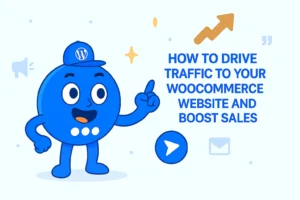How to Build Effective Buyer Personas for WooCommerce Websites
This article examines the pivotal role of buyer personas in achieving e-commerce success, with a specific focus on their application within WooCommerce environments. It highlights how a deep understanding of ideal customers can transform marketing efforts, optimize user experience, and drive product development.

Furthermore, this article introduces the Floating Awesome Button (FAB) WordPress plugin as a powerful, practical tool for implementing persona-driven strategies, thereby enhancing conversions and overall website engagement. By integrating strategic persona development with the dynamic capabilities of FAB & WooCommerce stores, it can cultivate more targeted, relevant, and ultimately profitable customer interactions.
2. Understanding Buyer Personas in E-commerce
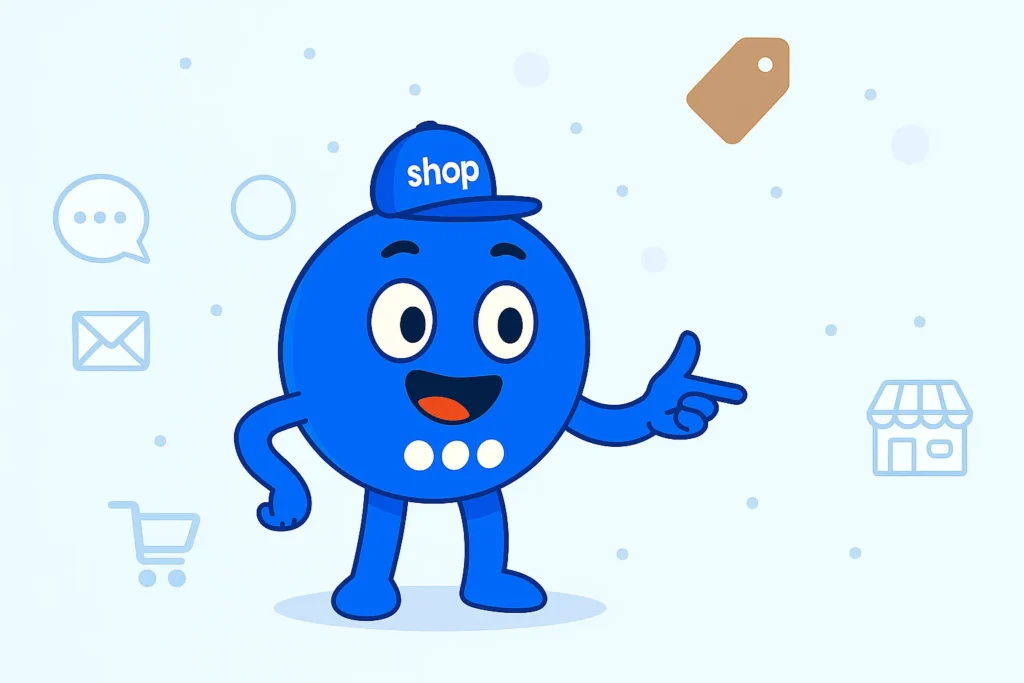
What is a Buyer Persona? (Definition, Purpose, Distinction from Target Market)
A buyer persona represents a fictional or archetypal depiction of a company’s ideal customer. This representation is meticulously constructed from comprehensive market research and concrete data derived from existing customers.
Beyond mere demographic details, a robust buyer persona encompasses behavioral patterns, underlying motivations, aspirational goals, and specific pain points, often including personality traits to make the character more vivid. The ultimate aim is to render customers tangible and relatable for internal teams, facilitating a more empathetic and effective approach to business operations.
The fundamental purpose of buyer personas is to serve as a strategic compass, guiding businesses toward a more profound understanding of their target audience. This understanding is instrumental in crafting highly effective marketing campaigns, informing strategic product development initiatives, and refining customer service protocols. By precisely defining the ideal customer, businesses can direct the right products to the right individuals, thereby maximizing their product’s market potential.
It is essential to distinguish a buyer persona from a broader target market. A target market typically refers to a large demographic segment, such as “women aged 35 to 45, in urban areas, who love yoga“. In contrast, a buyer persona is a highly specific and descriptive character, exemplified by “Evelyn, a 39-year-old engineer living in Austin, who has been going to her local yoga studio for eight years but now seeks ways to practice while she travels due to remote work“. This distinction underscores that personas provide a granular, nuanced understanding that broad market segments cannot offer.
Why Buyer Personas are Critical for WooCommerce Stores
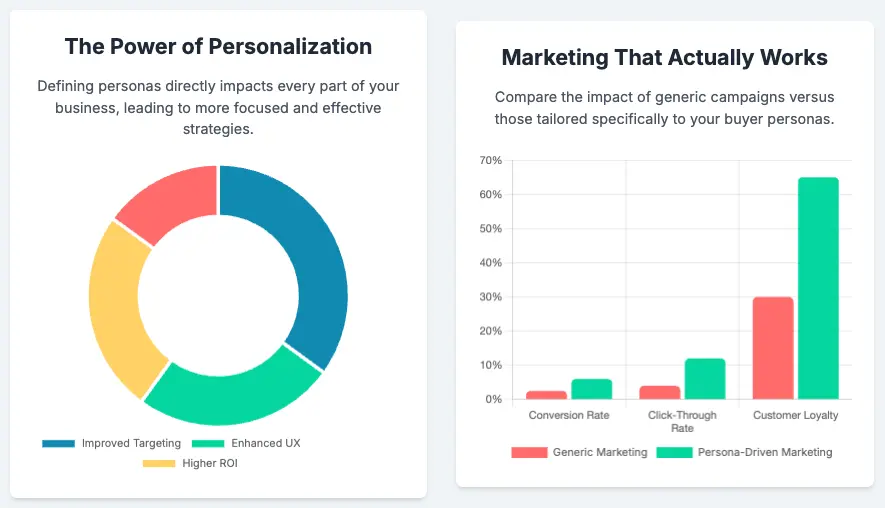
The adoption of buyer personas offers several critical advantages for WooCommerce stores:
- Improved Targeting and Relevance: Personas enable the formulation of timely and highly relevant information, which is crucial for attracting and retaining the most suitable customer base. For a WooCommerce store, this translates into the ability to tailor product descriptions, promotional offers, and website navigation in a manner that deeply resonates with the specific needs and preferences of distinct customer segments.
- Enhanced Customer Connection and Empathy: By delving into customer backgrounds, professional fields, attitudes, objectives, and challenges, businesses can forge stronger connections with their clientele. This empathetic approach allows a WooCommerce store to proactively address unique customer needs and expectations, thereby fostering trust and long-term loyalty.
- More Successful Marketing and Content: A comprehensive understanding of a customer’s life and decision-making process simplifies the task of capturing their interest. Personas guide content creation efforts, ensuring that the material produced is maximally engaging and informing objective decisions regarding content formats, such as videos, social media posts, or articles. For WooCommerce, this translates into compelling product content, highly effective email marketing campaigns, and precisely targeted advertising efforts.
- Focus on User Needs and Experience: The development of personas shifts the strategic focus from a mere
sales pitchto a responsive approach user centered needs, significantly enhancing the overall customer experience. For an online store, this means optimizing the user journey, minimizing friction points, and providing effective solutions to common challenges encountered during the shopping process. - Significant Return on Investment (ROI): Empirical data indicates a strong correlation between defined buyer personas and business success, with 71% of brands that exceed their revenue goals having established buyer personas. This statistic highlights the direct and substantial business impact that persona development can yield.
The Concept of Negative Personas
Beyond identifying ideal customers, it is equally important to define “negative personas.” These are customer archetypes who tend to consume disproportionate amounts of time and resources with a low probability of conversion or a high likelihood of generating issues, such as frequent product returns or excessive support requests without subsequent purchases.
Understanding these negative personas allows businesses to refine their marketing efforts to exclude unsuitable leads, thereby preserving valuable resources and concentrating on more profitable customer segments.
Broader Implications of Persona Adoption
Strategic Shift in Digital Marketing
- The shift from broad to precise marketing represents a significant transformation in digital marketing.
- Businesses are moving away from the “spray and pray” approach, which prioritizes making the most noise.
- The focus is now on highly personalized and precise engagement.
- This change isn’t just about efficiency; it’s about gaining a competitive advantage through a deep understanding of customer journeys and motivations.
- Precision in marketing enhances advertising efficiency, ensuring messages reach those most likely to convert.
Personas as a Catalyst for Internal Alignment
- Well-defined personas promote clarity and focus within an organization.
- They become an integral part of the internal lexicon, aligning teams around a unified understanding of the customer.
- The persona creation process involves various departments, including sales, marketing, product development, and customer service.
- This collaboration reduces silos, improves inter-departmental communication, and ensures consistency in customer-facing initiatives.
- As a result, businesses can build a stronger brand identity and enhance customer satisfaction across all touchpoints.
Proactive Problem-Solving Through Personas
- Personas empower businesses with the ability to proactively identify and address market problems.
- Instead of just reacting to customer feedback, businesses can anticipate unmet needs or market gaps before they grow into larger issues.
- For WooCommerce stores, this proactive approach leads to:
- More innovative, customer-centric product development.
- Anticipation of common customer inquiries, with solutions or comprehensive FAQs.
- This results in higher customer satisfaction, reduced churn, and a product offering that truly addresses customer needs.
- Ultimately, this drives repeat purchases and fosters positive word-of-mouth referrals.
3. Crafting Your WooCommerce Buyer Personas: A Data-Driven Approach
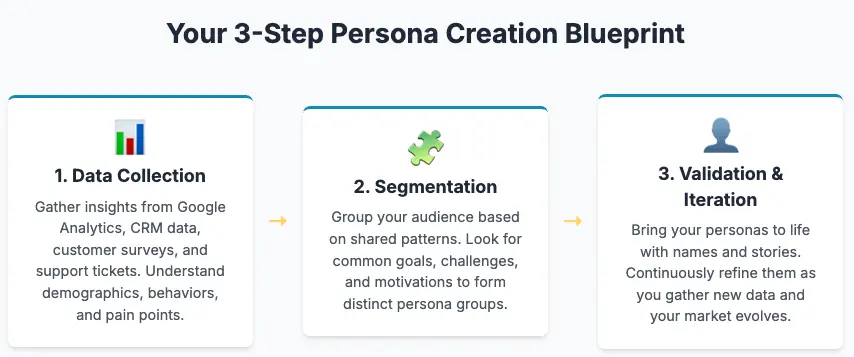
Phase 1: Data Collection & Research
The foundational step in persona creation involves gathering comprehensive information about the target audience.
- Leveraging Internal Data: Businesses should begin by harnessing existing internal company data. A Customer Relationship Management (CRM) system is a rich repository for demographic information pertaining to past customers. Website analytics platforms, such as Google Analytics and WooCommerce Analytics, provide invaluable insights into user demographics, behavioral patterns (including purchasing habits, timing of purchases, searched products, and spending tendencies), and overall interaction with the online store.
Furthermore, insights from the sales team and customer support department are crucial, as these teams engage with customers daily and possess qualitative understandings of pain points, common inquiries, objections, and motivations. Analyzing customer feedback and support requests can reveal recurring themes and persistent pain points. Data from email marketing campaigns can also illuminate customer preferences and engagement levels. - Conducting External Research & Qualitative Data Gathering: Once internal resources are exhausted, external research and qualitative data collection become paramount. Surveys, utilizing tools like SurveyMonkey, Contact Form 7, or Google Forms, are effective for gathering both quantitative (e.g., demographics) and qualitative (e.g., preferences, challenges, goals, buying behaviors) data from target audiences. Incorporating open-ended and follow-up questions can delve deeper into the underlying reasons behind observed behaviors.
Direct customer interviews offer profound insights into customer psychology, daily responsibilities, professional challenges, their definitions of success, and the skills required for their roles. These interviews help validate initial assumptions. Focus groups facilitate group discussions, allowing for observation of interactions and the collection of diverse perspectives.
Social listening, the process of monitoring and analyzing social media conversations, mentions, and sentiments related to a brand, products, or industry, reveals brand perception, customer preferences, needs, and pain points. Tracking target customer job titles on platforms like LinkedIn can also provide relevant information.
Key Elements to Identify: The information gathered should be organized to define several key elements for each persona:
| Category | Description |
|---|---|
| Demographics | Age, gender, income level, education, marital status, geographic location, job title, industry, and company size. |
| Behavioral Patterns | Buying habits, decision-making processes, preferred online platforms, communication habits, and how they interact with the online store. |
| Motivations & Goals | What drives their purchases, their personal or professional aspirations, their priorities, and how the product or service helps them achieve these goals. |
| Pain Points & Challenges | The specific obstacles they face and the problems that the product or service aims to solve. |
| Values & Preferences | What they consider important when evaluating a product or company, their preferred media channels, and brands they favor or dislike. |
| Objections | Common reasons they might hesitate to make a purchase. |
| Personality Traits | Characteristics that align with their goals and behaviors, making the persona more human. |
| Quotes, Name, and Photo | Assigning a name, a representative photo, and illustrative quotes helps bring the persona to life and makes it more relatable for internal teams. |
Phase 2: Segmentation & Persona Development
Following data collection, the next phase involves structuring the information into actionable personas.
- Segment Your Customer Base: The collected data should be divided into distinct segments based on shared characteristics, behaviors, and needs. Common segmentation factors include demographic (e.g., age, gender, location), psychographic (e.g., lifestyle, values, interests), and behavioral (e.g., buying patterns, preferences, pain points).
- Prioritize Segments: Businesses should prioritize the segments that are most crucial for their business objectives and marketing efforts.
- Create Fictional Characters: For each prioritized segment, a fictional character should be developed. This involves assigning a name, age, occupation, and other pertinent details. It is critical to avoid relying on stereotypes when creating these characters.
- Define Goals and Pain Points: Clearly articulate what each persona is striving to achieve and the specific obstacles they encounter.
- Add Personality Traits: Infuse the persona with personality traits to make them more human and relatable.
- Outline & Biography: A persona often includes a photograph or illustration, a name, and a concise biography detailing their primary characteristics, challenges, and objectives. Some organizations opt to expand these personas into multi-slide presentations to provide more detailed research and context.
- Balance: It is imperative to strike a careful balance, ensuring that personas are neither excessively broad (which would yield insufficient actionable information) nor too narrowly defined (which could lead to overlooking significant business segments). For initial implementation, developing one to five distinct personas is generally sufficient.
Phase 3: Validation & Iteration
Persona development is not a static exercise; it requires ongoing validation and adaptation.
- Use the Persona: Once created, personas should be actively integrated into marketing, product development, and customer service strategies.
- Continuous Updates: Personas are dynamic tools. They must be regularly updated as new information becomes available, market trends evolve, and the business itself undergoes changes.
4. Applying Buyer Personas to Your WooCommerce Strategy
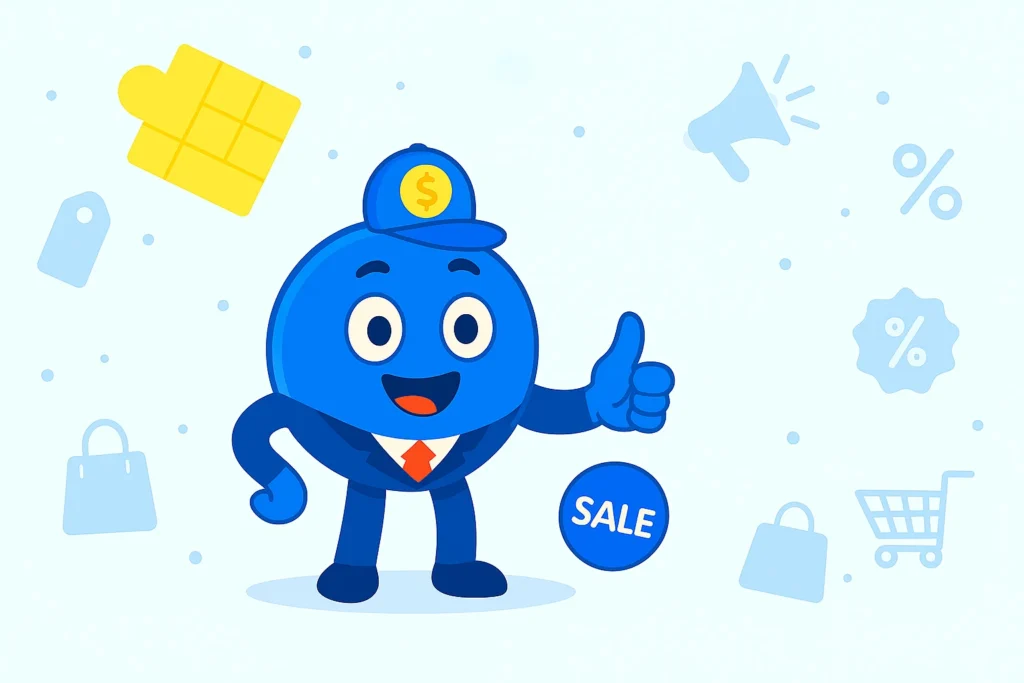
Personalizing Marketing & Content
- Tailored Messaging: Persona insights are instrumental in crafting marketing messages that directly resonate with each segment’s specific goals, pain points, and motivations. This applies comprehensively to website copy, detailed product descriptions, and all promotional materials.
- Content Strategy & Formats: Personas serve as a guide for creating engaging content, informing decisions about the most consumed and accepted formats, such as videos, social media posts, and articles. For instance, a “Visual Learner” persona might benefit most from video tutorials demonstrating product usage, while a “Research-Oriented” persona would find detailed blog posts comparing product features more effective.
- Targeted Advertising: Leveraging the granular demographic and psychographic data derived from personas enables the execution of highly targeted ad campaigns across platforms like Facebook and Google Ads. This precision allows for the inclusion of ideal audiences and the exclusion of unsuitable ones, thereby maximizing ad spend efficiency and significantly improving click-through rates (CTR).
- Email Marketing Segmentation: Buyer personas facilitate the segmentation of email lists, allowing for the delivery of highly relevant and personalized email campaigns. This targeted approach demonstrably improves open rates and click-through rates.
- Channel Strategy: Personas provide valuable insights into an audience’s channel behavior, revealing where they engage in conversations and what topics capture their interest. This understanding enables the distribution of tailored content on platforms where the audience is already active, maximizing the impact of marketing efforts.
Enhancing User Experience (UX) & Conversion Funnel
- Optimizing the Customer Journey: Personas aid in mapping the ideal customer journey, identifying critical stages where ideal leads might join or where potential customers might drop off. This enables comprehensive optimization of the entire conversion funnel, from the initial landing page visit to the final purchase.
- Website Navigation & Design: The layout, navigation, and product categorization of a WooCommerce site can be strategically designed to align with the browsing habits and preferences of specific personas. For a “Quick Shopper” persona, prominent search bars and clearly defined categories are essential for efficient navigation.
- Addressing Pain Points in UX: If a persona’s identified pain point involves difficulty in locating specific product information, the WooCommerce site can implement solutions such as enhanced search filters, comprehensive FAQs, or clearly presented product specifications to alleviate this friction.
Informing Product Development & Service Improvement
- Customer-Centric Product Development: Personas are invaluable in identifying unmet customer needs and persistent pain points, thereby guiding the development of new products or features that directly address these issues. This ensures that products are conceived and built with the actual customer’s requirements at the forefront.
- Service Personalization: Customer service approaches can be tailored based on the specific needs of each persona. For instance, a “Problem Solver” persona might prefer detailed technical support, whereas a “Relationship Builder” persona might value personalized recommendations and a more conversational interaction.
- Identifying Negative Impressions: By leveraging buyer personas, businesses can pinpoint which features of their products or services are eliciting negative responses within specific buyer models. This allows for targeted improvements or adjustments to mitigate dissatisfaction.
5. Supercharging WooCommerce with the Floating Awesome Button (FAB): A Persona-Centric Approach

The Floating Awesome Button (FAB) WordPress plugin offers a robust and versatile toolset that can be strategically deployed to cater to the specific needs and behaviors of different buyer personas on a WooCommerce site, thereby significantly driving engagement and conversions.
Introduction to Floating Awesome Button (FAB)
FAB is a highly customizable sticky action button plugin designed for WordPress sites. It “floats” persistently on a corner of the website, remaining visible as visitors scroll through the page. This button functions as a dynamic shortcut, providing immediate access to specific actions or custom content.
FAB Use Cases Aligned with Buyer Persona Needs
The diverse features of FAB can be strategically mapped to address the unique requirements of various buyer personas:
- For the “Quick Shopper” Persona (Values Efficiency, Directness): This persona prioritizes speed and directness. FAB can provide a Floating Quick Cart/Checkout button, allowing them to view cart details and proceed to checkout from any page. An Advanced Search Bar accessible via FAB offers quick access to product search, including natural language queries. A “Recently Viewed Products” feature helps them swiftly return to previously browsed items. Additionally, a prominent “Buy Now” button can facilitate impulse purchases.
- For the “Deal Seeker” Persona (Motivated by Value, Promotions): This persona is driven by discounts and special offers. FAB is ideal for displaying Pop-up Notifications or Toast Alerts that highlight time-sensitive offers, promotions, or product catalogs. A direct “Apply Coupon” button can provide immediate access to discounts. Furthermore, FOMO (Fear Of Missing Out) Alerts can be configured to show “just purchased” notifications, creating a sense of urgency among prospective buyers.
- For the “Information Seeker/Researcher” Persona (Needs Details, Trust): This persona requires comprehensive information to make informed decisions. FAB can embed Custom Shortcodes or Widgets in a Modal to display detailed product information, extensive FAQs, or comparative tables. Video and Audio Embeds can showcase product demonstrations, customer reviews, or tutorials. Easy access to Contact or Support Forms ensures they can submit detailed inquiries.
- For the “Community-Oriented/Social” Persona (Values Connection, Sharing): This persona values social interaction and sharing. FAB can feature Social Media Share Icons, enabling effortless sharing of products or content across their preferred platforms. Quick Contact Links for WhatsApp chat, SMS, email, or direct calls facilitate immediate connection.
- For the “New Visitor/Unsure” Persona (Needs Guidance, Low Friction): This persona requires gentle guidance and minimal friction. FAB can display a Welcome Toast or a First-time Discount Pop-up to greet and incentivize them. Easy opt-in for Newsletter or Membership Forms can encourage future engagement. A streamlined Login/Register Modal simplifies account creation or access. Finally, “Exit Intent” Popups can be deployed to capture their attention before they leave the website.
The following table illustrates how specific Floating Awesome Button features can be strategically applied to address the needs of various buyer persona archetypes:
| Buyer Persona Archetype | Persona Need/Behavior | Relevant FAB Feature(s) | Specific FAB Implementation Example |
| The Quick Shopper | Wants fast checkout, efficient navigation | Floating Quick Cart, Advanced Search, Recently Viewed Products, Buy Now | FAB with “View Cart” button always visible; FAB opens search modal instantly. |
| The Deal Seeker | Looks for discounts, promotions, urgency | Pop-up Notifications, Toast Alerts, Apply Coupon, FOMO Alerts | FAB triggers discount popup on exit intent; FAB shows “Limited Time Offer” toast. |
| The Information Seeker | Needs detailed product info, trust-building content | Custom Shortcode/Widget in Modal, Video/Audio Embeds, Contact/Support Forms | FAB opens modal with product demo video; FAB provides quick access to detailed FAQs. |
| The Community-Oriented Buyer | Likes to share, values social connection | Social Media Share Icons, Quick Contact Links | FAB offers quick share buttons for Facebook/Instagram; FAB provides direct WhatsApp chat link. |
| The Hesitant Visitor | Prone to abandoning cart, needs gentle nudge | Welcome Toast, Newsletter/Membership Forms, Exit Intent Trigger | FAB shows “Don’t Leave Yet!” offer on exit; FAB provides easy newsletter signup. |
7. Conclusion
The development and strategic application of buyer personas represent a transformative force for WooCommerce stores, serving as the cornerstone for sustainable e-commerce growth and fostering deep customer loyalty.
By moving beyond broad demographic segments to cultivate a nuanced, empathetic understanding of ideal customers, businesses can unlock unparalleled precision in their marketing, product development, and customer service efforts. This personalized approach ensures that every interaction is relevant, addresses specific needs, and resonates deeply with the individual customer.
Integrating powerful tools such as the Floating Awesome Button (FAB) amplifies this strategic advantage by providing a practical, dynamic mechanism to implement persona-driven insights directly on the WooCommerce site. FAB’s extensive customization and targeting capabilities enable real-time, contextual personalization, transforming the website from a static storefront into a proactive “shop assistant.”
The journey from meticulous data collection and persona creation to personalized customer engagement and continuous optimization is iterative. By consistently measuring the impact of persona-driven strategies through key performance indicators and using that data to refine both strategies and personas, WooCommerce businesses can maintain agility and responsiveness in a dynamic digital marketplace.
In an increasingly crowded online landscape, the ability to speak directly to the right person, with the right message, at the right time, is not merely an advantage—it is an imperative for achieving superior conversions, fostering enduring customer relationships, and securing long-term success.


